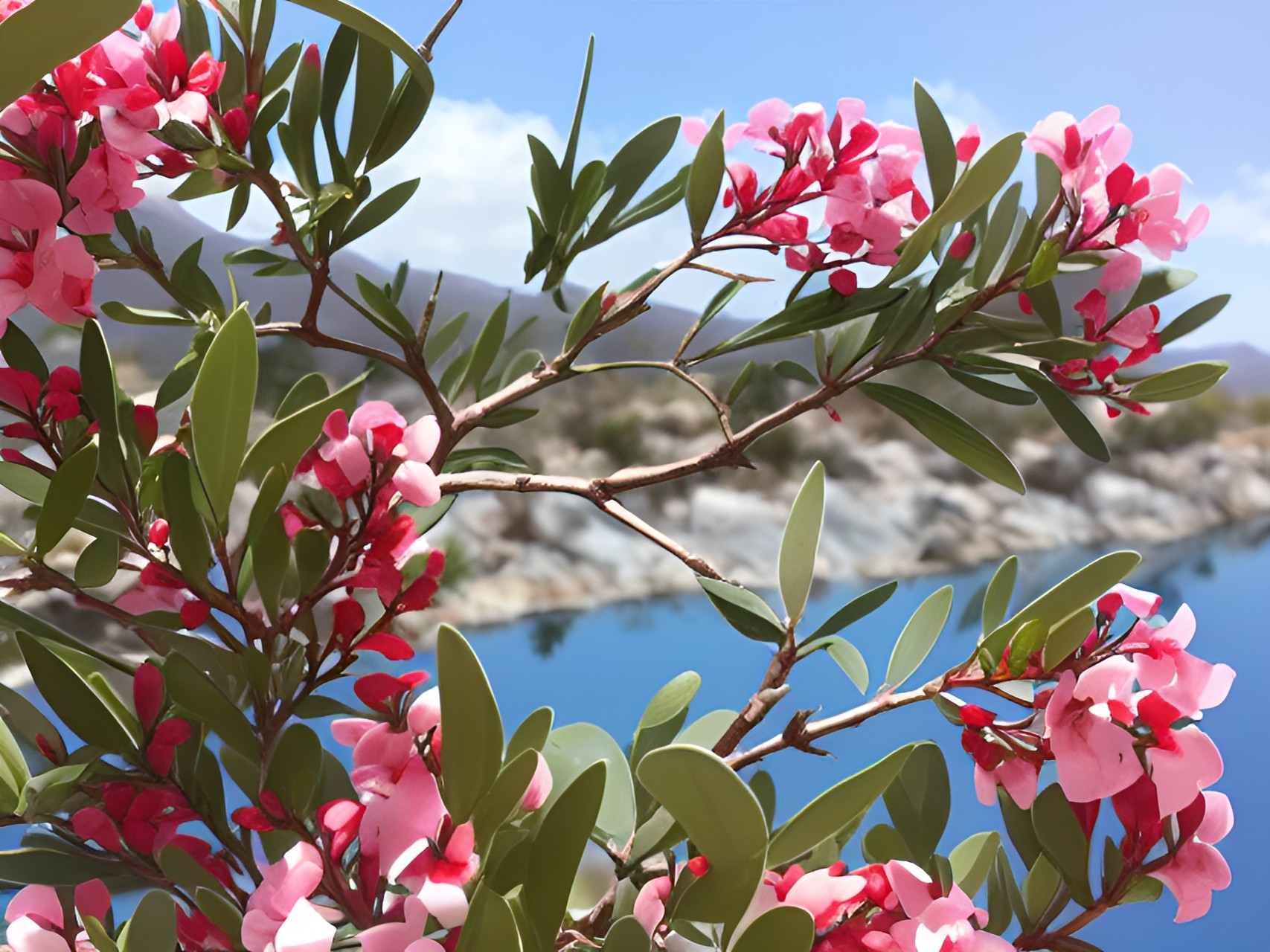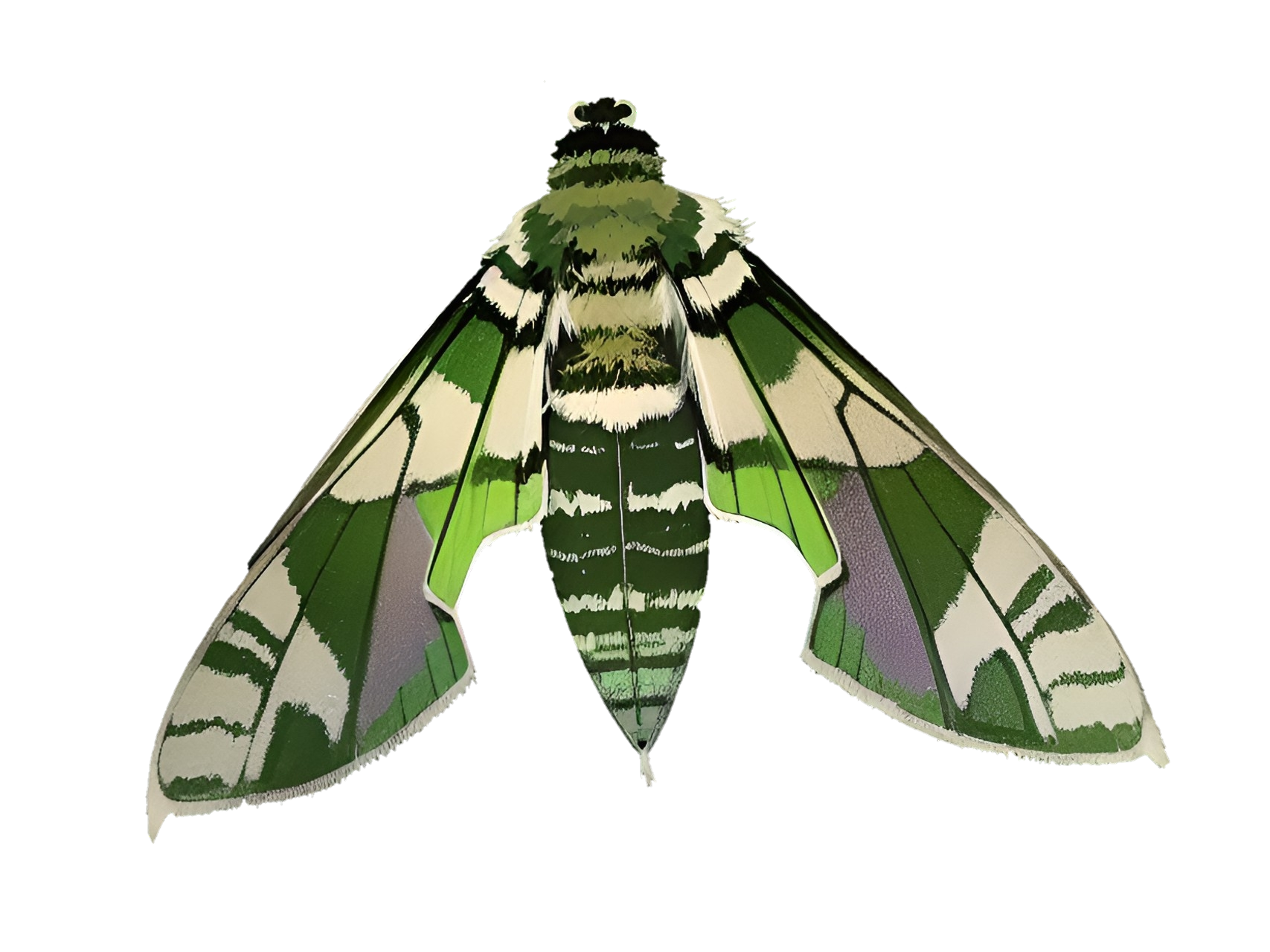Nerium Cupidinis
Nerium is a beautiful but toxic flowering plant, its variants found all across Emynea. It is also a flower of many names including Eros Nerios, Difla 'iirus, Aishen Jiazhutao and Pythia's Nerium. Each nerium inherits a Kaithur which reflects its environment but it is also a popular choice in gardens. Growing as either a shrub or small tree, Nerium prefers temperate and subtropical climates. It is extremely flood and drought resistant, surviving even in the Shamsi Desert, Arabiyyah and Xishi Shamo. Nerium is believed to originate from Dawn Ahrayn, thriving alongside the radiant waters of Lithmor's Seat.
Nerium is poisonous, not having any direct culinary or medicinal uses. Instead it is used for poisons, Material Magic and as an ornamental plant or windbreak. Eastern variants in Yaxiya inherit Lothvem's Vision while those in Alkelbulan and Eluziar have Zithvek's Vision. Both are useful in amplifying fortune telling and clairvoyance related to their aspects, popular for predictions or insights into romance. Regardless of where they are located, all Nerium Cupidinis inherit a Diet manifestation. This blessing enables Nerium to subsists off of and heal by absorbing their aspect. A nerium's second kaithur varies most by region but all are Diet manifestations. Naturally sprouting along waterways which are contaminated with their aspect, whether radiation, poison, disease or even dangerous metals, locals know wild Nerium adjacent to sources of water are a sign of its contamination. Yaxiyan variants are known to sprout on craggy mountainsides overtop metallic deposits, indicating wherever is best to mine!
|
First AbilityZithvek's Vision Those with Zithvek's Vision are able to enter a meditative state in which this plant can explore and peek through portals or windows within Zithvek's Plane. Mostly used by humans to induce visions related to Zithvek.
Lothvem's Vision Nerium with Lothvem's Vision are able to enter a meditative state in which this plant can explore and peek through portals or windows within Lothvem's Plane. Mostly used by humans to induce visions related to Lothvem.
Second AbilityRithaldis' Diet Those inheriting Rithaldis' Diet are able to consume or absorb radiant energy as sustenance, healing or to replenish their magic energy. They cannot be harmed by radiance and instead consume it, magical or natural. This includes ionizong radiation.
Torith's Diet With Torith's Diet, nerium can consume or absorb any kind of poison without ill effect and these can be eaten for sustenance, healing or to replenish magic energy.
Veksit's Diet Thanks to Veksit's Diet, these nerium can consume or absorb any kind of bacteria or virus without ill effect and these can be eaten for sustenance, healing or to replenish magic energy. They cannot be harmed by or get sick from these organisms.
Martor's Diet Nerium inheriting Martor's Diet can consume a kind of metal for sustenance, healing or to replenish magic. Cannot be harmed by metals either, instead absorbing them.
|
Anatomy |
This is a shrub or small tree with erect stems which splay out as they mature. The leaves are thick and leathery in pairs or whorls of three, dark green and narrow, and younger leaves are waxy. Flowers grow in clusters at the end of each branch and are showy, profuse and fragrant. Their follicle fruit are long and narrow in pairs, splitting open at maturity and releasing fluffy seeds into the air! Flower colors can be naturally white, cream, tan, yellow, pink, red, purple, lilac, burgundy and orange. magic form differ dramatically, the leaves and roots taking on the color of its Diet aspect while flowers and stems can become either indigo or vermillion.
|
Adaptions
Despite their beauty, every part of this plant is poisonous! Ingesting any part of this plant will effect the digestive system, the heart and the central nervous system (brain and spine). A high enough dose of nerium can even be deadly! Despite these dangers, the plant's kaithur imparts visions and hallucinations of either Zithvek's Plane or Lothvem's Plane, seeming to bleed over into the physical world as the consumer simultaneously experiences the ill effects of the poison. Inhaling the smoke from burning these plants is the ideal method, peeking into the planes for romantic predictions or insights. However, the consumer must be careful with their dosing. Compounds and Symptoms
There are a number of compounds but the primary ones are oleandrin and oleandrigenin, both of which are cardiac glycosides. Dried materials from this plant still contain toxins and these are hazardous for animals like sheep, horses, cattle and other grazers. Ordinarily the leaves are too bitter but they have been known to kill horses, sweet when dried. Using the branches for cooking fire, spearing food or skewering food is also dangerous.
|
Habitat |
Nerium sprouts around stream beds in river valleys but is actually extremely flood and drought tolerant. It can survive poor soils, intense heat, salt spray, continued drought and periods of inundation (flooding). Nerium will grow in subtropical and tropic climates but can actually be found all across Emynea. In Alkelbulan nerium is found in the Arabiyyan and Shamsi Deserts, Parsa, Birit Narim and Sesli Plato while in Eluziar they grow in Flumen Pontem, the Eluzian Valley, Hellas and Mexica. Finally, those in Yaxiya grow along the islands of Bharat, the mountainsides of Dizhenbei Dong and Kunlun Shan and the wadis of Xishi Shamo. |
Life Cycle |
These plants can be propagated from cuttings or seed, readily rooting in the presence of water or rich organic material. They require visits from insects to seed and pollinate via a deceptive mechanism. The showy flowers act as advertisement, attracting pollinators from a distance, but actually offer no nectar. In the wild, nerium may live to up to two decades while domesticated nerium can persist for more than a century! |
DomesticationNerium cupidins is a component used in material magic and True Magic to enhance or focus visions. It is especially potent for insights or fortune telling for matters of love, passion and romance. It allows the caster to peek into or at least pull wisdom from either Zithvek or Lothvem's Elemental Planes. The most prevalent method is to smoke a small amount of their leaves for this purpose.
Aside from its use in magic, Nerium is popular as an ornamental plant in Quiris and Huaren gardens. It is featured similarly in their art. They are often planted alongside citron trees near swimming pools in Quiris palaces. Otherwise it will be grown in parks, alongside roads and privately. Because of it's deer-resistance and use as a windbreak, it is also grown as a hedge and at the edge of fields. Culturally, this plant is seen as a symbol and plays a part in various legends. It is featured in a tragic love story and, in floral arrangements or language it expresses caution and the complex nature of romance. Nerium can also symbolize desire, destiny and romance overall. To the Hellenes, it represents endless love and charm. |
Pests |
There are invertebrates known to be tolerant or immune to the oleandrin toxins and will feed on the plant. Caterpillars and moths eat just the pulp surrounding the leaves veins, avoiding any fibers. Larvae of certain butterflies and hawk-moths also feed on this plant, retaining or modifying the toxins in order to become unpalatable to birds. Solar Moths are among these species, especially the Nerium Solar Moth. |











Comments